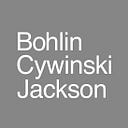Sourcing from the Earth, Claudy Jongstra Brings Agency and Modernity to a Forgotten Craft
By Sally Khomikh
While we are living and working through unprecedented times, it is still essential to our process and our practice to draw inspiration from our collaborators. One such collaborator is textile artist Claudy Jongstra — who’s process is playful, sustainable, and connects to our desire to create transformative spaces for our clients.
Several months ago, the firm had the privilege of welcoming Jongstra as a visiting lecturer and collaborator. Jongstra operates a small-scale biodynamic farm in the northern Netherlands, growing crops and producing wool from her flock of indigenous Drenthe Heath sheep. She partners with local farmers to handcraft her own iconic dyes by traditional methods.
Jongstra’s unique perspective on sustainable practices, activation of space, and the use of natural materials reignited our interest in the relationship between art and design. Through her poetic use of language, she welcomed us into her design process, inspiring us to think beyond our daily practice. She invited us to learn from her highly collaborative and holistic approach. The whimsical nature of her craft and the bucolic setting in which it is made had us all thinking, “when can I travel again?”
Here is a look into her creative process:
Step 1: Inspiration
Her work is a celebration of materials, resources, local context, and tradition. In a recent residential collaboration with our practice; her custom textile proved to be effortlessly complementary to the project and its coastal setting. The house is a retreat for an active family to entertain their friends and a quiet place for contemplation. Located on an environmentally sensitive portion of the California coastline, the site is defined by two unique environments: dramatic bluffs facing expansive ocean views, and a deep sheltered redwood canyon with a spring-fed creek that runs through the property. Jongsta’s work is a reflection of the natural color pallet of the surrounding landscape.
Step 2: Dye
Each dye can create 500 shades with just one plant! Aside from the well-received indigo pallet, all her colors are made completely naturally from edible dyes (for example, gold comes from wasted onion skin).
Step 3: Time
The process does not come without its costs and is quite laborious. For Jongstra and her team of 25 people, only a few large-scale pieces are made in one year. Madder root, for example, produced only in the Netherlands, takes five years to grow and two years to make the dye.
Step 4: Shipping
With 80% of commissions coming from the United States, Jongstra’s lightweight and easy to ship pieces are both practical and accessible.
Jongstra has worked on a variety of commissions for libraries, private residences, restaurants, museums, and more. Her large-scale installations, rugs, and bedspreads are symbolic of the spaces they are created for, and the communities they serve — taking inspiration from the local environment. Through “maintaining a lost craft,” she has devoted the past 25 years to making both installations and wearables out of wool. Part of what is fascinating about her work is both the holistic benefits and the material’s organic capabilities; wool is acoustically insulating, flame retardant, antibacterial, and helps regulate humidity!
Because Jongstra’s work is harmonious with natural materials like wood, and the beautiful pastels of the pecan colored hills, her addition to our residential project (a mustard yellow rug) provides warmth and a lived-in quality that is both elegant and functional. Wool is a resilient material; the cat’s claws didn’t ruin the piece and even added to its naturally textured quality. The client reflected, “it’s so comfortable to lay on, you feel grounded, and you can embrace the peaceful ocean views.” Jongstra’s ability to create an experience for her patrons through her work is transformational, a quality we aspire to bring to all our projects.
Seeds for the Future
This year, Studio Claudy is launching a Community Seed Bank for Colour (CSBC), an open-source seed bank for historical perennial dye plants. CSBC will foster autonomy for farmers by creating access to un-patented, increasingly scarce seeds and will encourage active community engagement in the return of natural colors to the landscape, as well as to their built environment, through public, educational programming, and agricultural volunteer opportunities. Learn more about recent projects and processes on Jongstra’s Instagram.
